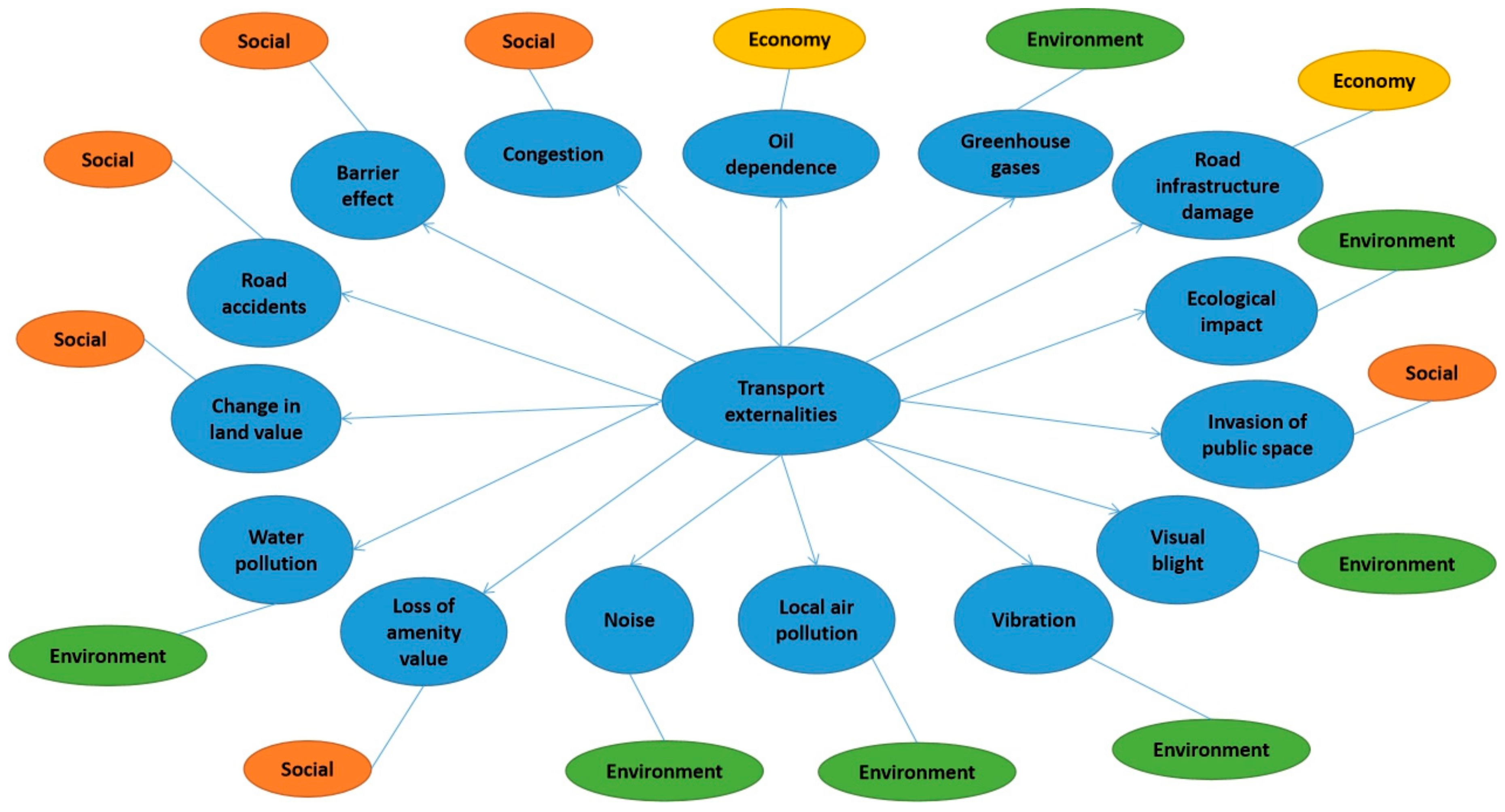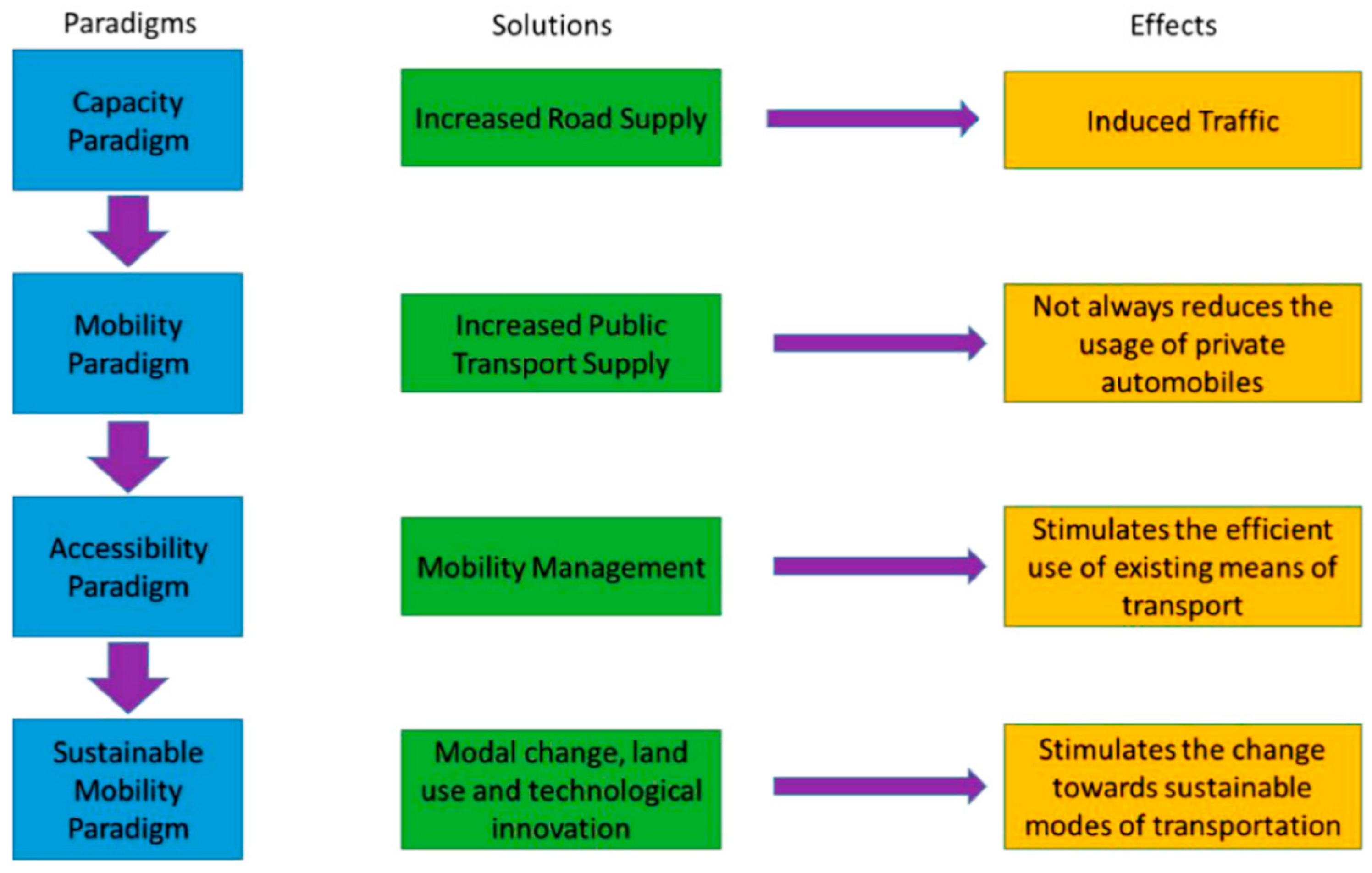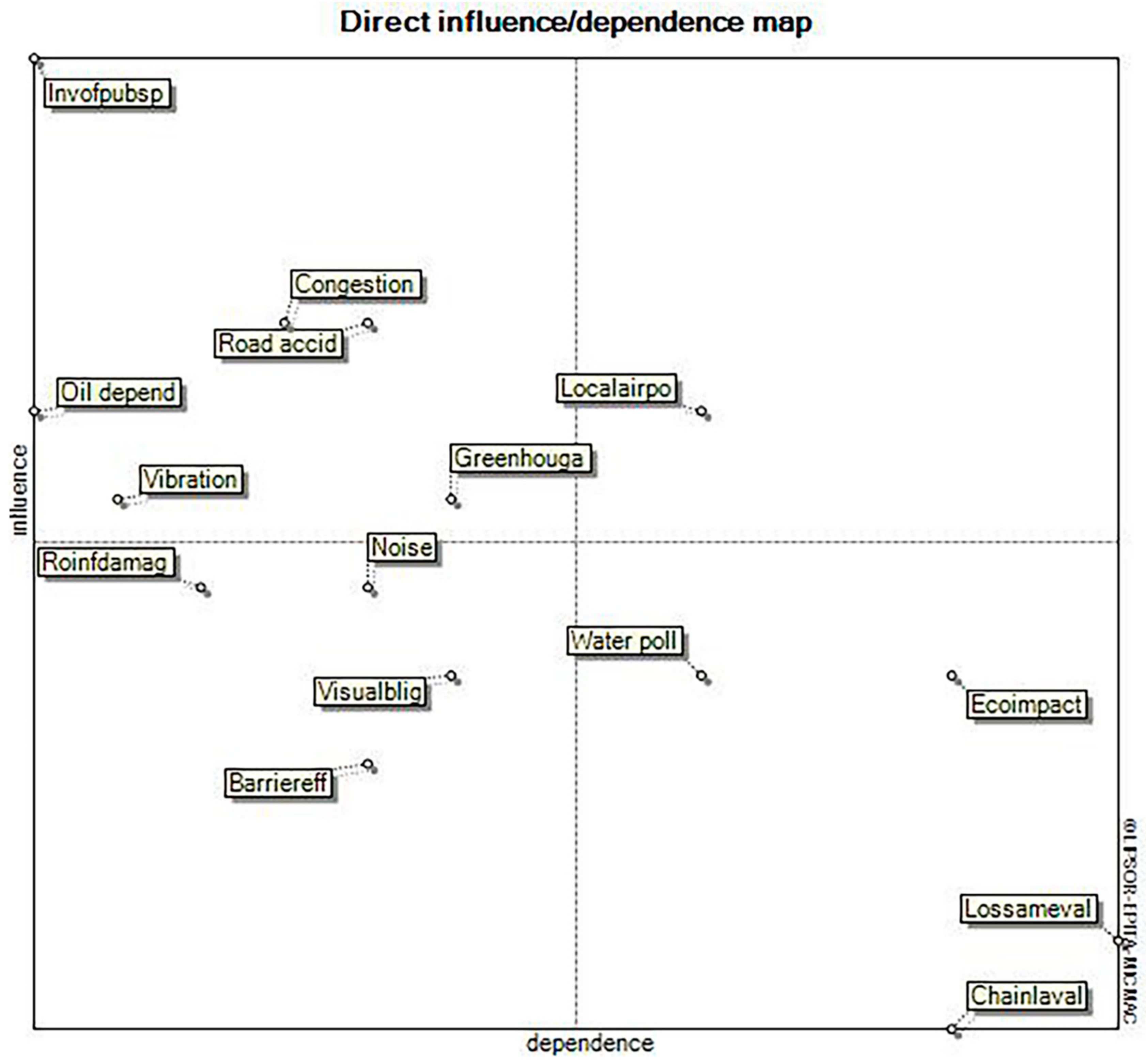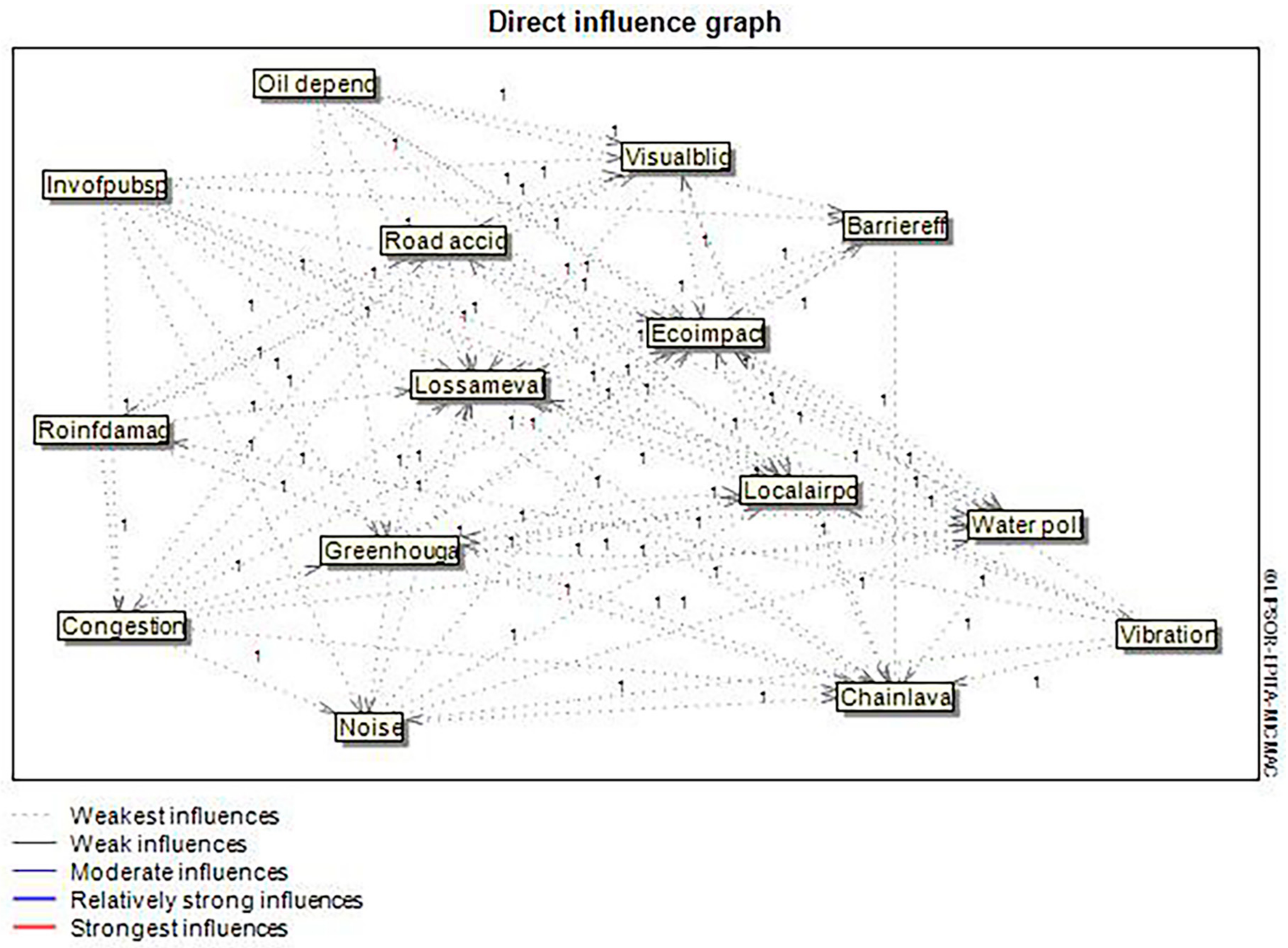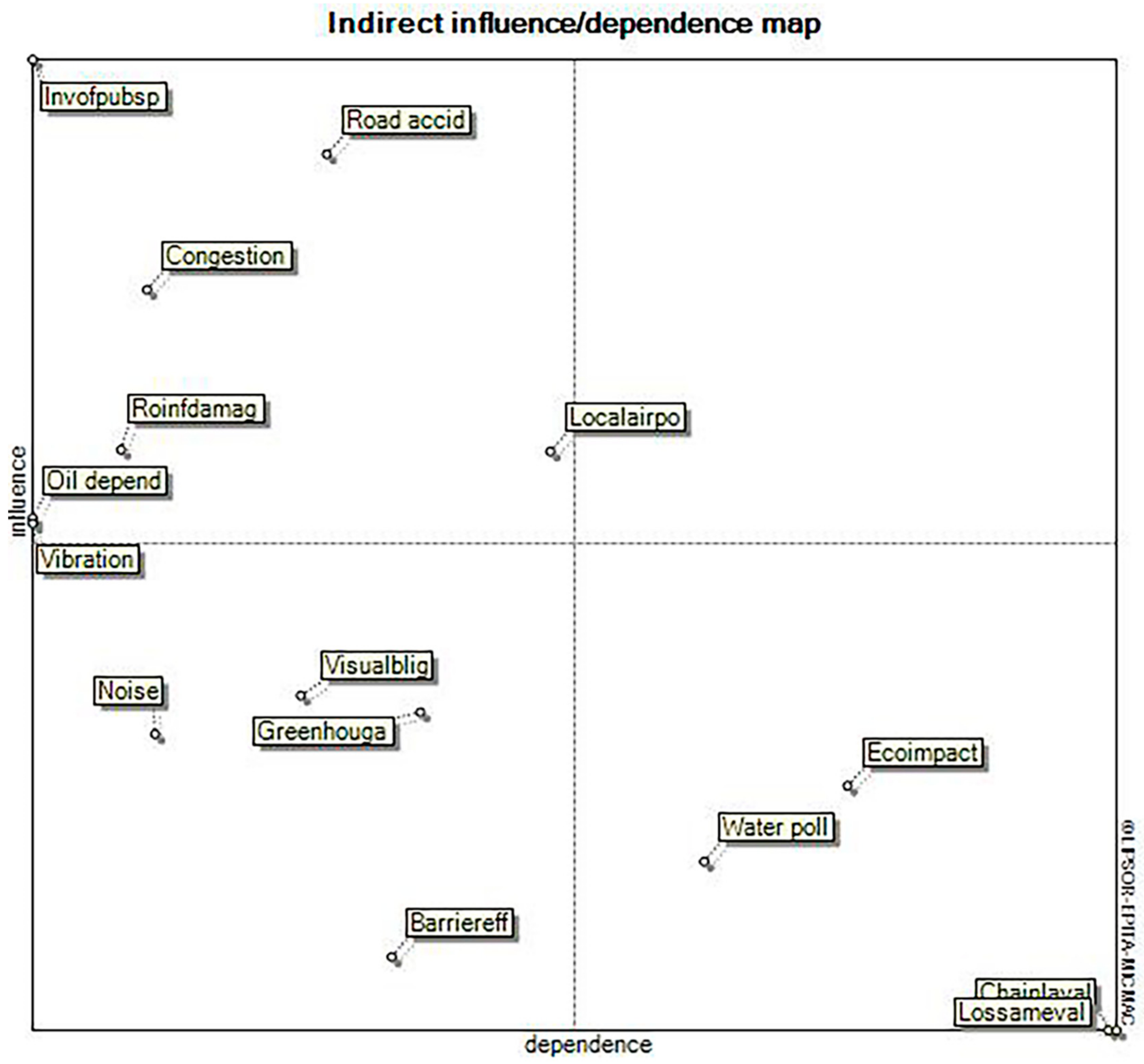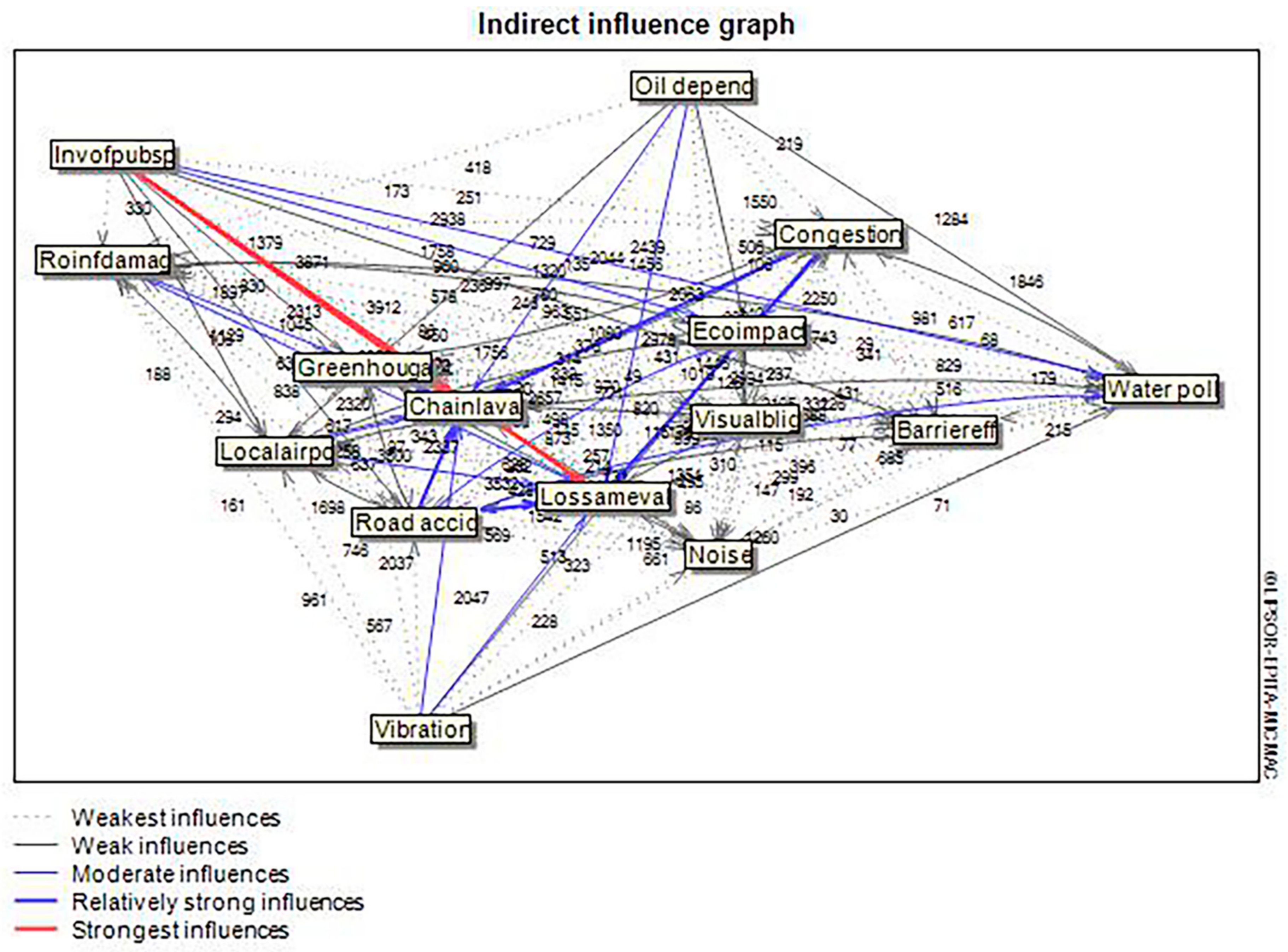1. Introduction
The twentieth century was decisive for the urbanization of the world as economic, social, cultural, and political processes such as globalization, in conjunction with population growth, caused the expansion of cities [
1]. Hence, cities needed to be remodelled as they faced overpopulation, peripheral formations, and metropolization. The structure of the city has transformed into a diversified, multi-nuclear form, with high rates of environmental pollution and internal insecurity [
1]. This situation has generated the degradation of public space, the disorganization of urban space, a decrease of connectivity between localities, and massive migration to the outskirts of the city, generating the phenomenon of urban sprawl [
2]. Through the latter phenomenon, it has become apparent that travel within cities and from cities to other regions is essential. Transport therefore rose as a key factor for city planning [
3], as it is an important element for influencing the economic robustness of an area and the well-being of its inhabitants [
4,
5,
6]. This can be magnified within the context of urbanization where economic opportunities are strongly related to the urban centres, contrary to the residential areas, that are mainly located on the outskirts, generating an aggregate mobility demand and longer travels that start from the suburbs of the city [
7,
8]. Generally, through literature review it has been demonstrated that infrastructure investment positively influences growth and economic impact [
9]. Nowadays, the scientific literature has expanded with implemented research using divergent perspectives, such as growth regressions and production functions. These investigations have provided evidence that transport has the ability to positively impact growth rate, productivity, output, and economic development [
10,
11,
12,
13,
14,
15,
16,
17,
18,
19,
20,
21].
Furthermore, the infrastructure of transport is an essential component to take into account in order to enhance freight mobility and urban design scenarios [
22,
23]. Hence, the transport of people and goods is essential for the development of a country. However, the activities of both types of transport (freight and passengers) have another characteristic in common, and that is the generation of several negative externalities, which are rarely considered by the authorities in the private and public sectors [
24]. In general, there is an accord in literature that road transport is responsible for the generation of several negative externalities, such as congestion, barrier effects, road crashes, oil dependence, and water and air pollution [
25].
Private auto-mobiles have the capacity to contribute to climate changes via the generation of greenhouse gases and a variety of different pollutants. The latter could severely impact the environment and consequently the health of the people [
26,
27]. In Mexico in 2008 there were 14,000 deaths due to poor air quality because of gasoline combustion, as well as a number of people impacted by road accidents (750,000 injured, 40,000 disabled, and 24,000 deaths) [
28]. The pandemic of traffic accidents is a major contributor of the social costs generated by the road transport. For instance, in 2007, Parry, Walls, and Harrington evaluated within the geographical context of the United States of America that road accidents generated social costs equal to 4.3% of the Gross Domestic Product (GDP), while the World Health Organization (WHO) values the damage of road traffic crashes for most countries at 3% of their GDP [
29].
In this gloomy panorama, it is important not to forget the degradation of public space due to the intensive use of private vehicles and associated infrastructure that has harmful effects, not only upon the psychology of the local population, but also upon the attractiveness and image of the city [
30]. The studies of Putnam [
31] and Hart [
32] provide evidence that the long times spent in travelling (congestion) reduce the involvement of individuals in their communities and limit social relations. These negative externalities caused by the transportation sector have serious impact upon sustainable development that can be defined as the development destined to cover the needs of the present generations without endangering the capacity of future generations to cover their respective needs [
33]. Sustainable development has three axes upon which the quality of life can be based: environment, economy, and society [
34].
Hence, the 21st century introduced new challenges to which the mono-disciplinary concept of transport failed to respond, such as environmental problems, major congestion, the invasion of public space in order to build new roads and move vehicles, noise, barrier effects, the inclusive-equitable management, and the humanization of urban management [
3,
32]. Therefore, the literature shows a transition from one approach in terms of transport to one in terms of mobility [
35,
36,
37,
38,
39]. It is worth mentioning that this shift from transport to mobility means moving from an approach oriented to the movement of vehicles and the infrastructure necessary for them, to a mobility approach interested in the movements of individuals [
1].
Consequently, the motivation of the present study is compatible with the contemporary challenge posed by urban traffic and urban planning systems, which is more related to the promotion of sustainable mobility via a qualitative improvement based on the mitigation of transportation’s negative externalities, participation, and accessibility that incorporates social groups with different mobility necessities [
40,
41].
Considering these facts, the aim of this work was to apply a MICMAC-structural analysis method to the identified negative externalities of transport in order to promote sustainable transportation. This was achieved in two steps: first we identified the relationships between the different negative externalities produced by the activities of transport and organized them hierarchically. Second, we assessed the effectiveness of several public policy-strategies oriented towards sustainable mobility according to their impact upon the negative externalities and the co-benefits generated by their implementation for society.
The main research question for this study is: “How is the hierarchical organization of the negative externalities of transport via a participative-prospective method able to contribute to the promotion of sustainable mobility development?” This principal question can be divided into five sub-questions:
RQ1: What are the negative externalities generated by transport?
RQ2: What are the public policies related to sustainable mobility?
RQ3: How are the negative externalities of transport interlinked with each other?
RQ4: How are the negative externalities of transport connected to public policies oriented towards sustainable mobility?
RQ5: Can public policies be organized in order of importance according to their impact upon the negative externalities of transport?
The structure of the paper is as follows.
Section 2 presents the negative externalities generated by transport and offers a brief presentation of the literature review related to changes in transportation paradigms and the existing strategies for sustainable mobility.
Section 3 provides information about the method used to determine the interrelation between the negative externalities of transport, and applies structural analysis for their organization in order of importance.
Section 4 provides the conclusions of the paper and proposes directions for future research on the issues of sustainable mobility.
3. Methodology and Results
This part of the paper is separated into three sub-sections. The first one presents a brief introduction to the method of Impact Matrix Cross-Reference Multiplication Applied to a Classification (MICMAC)-structural analysis. The second section shows the application of the three steps of structural analysis to the negative externalities of transport, and the third presents the results and the discussion of this study.
3.1. Introduction to Structural Analysis: The MICMAC Method
The constant need to know what the future holds has always concerned humanity. From the beginning of civilization, the human species has tried to decipher it in different ways using arcane approaches such as magic, divinatory arts, and oracles, and later via scientific approaches such as mathematical projection and extrapolation of trends.
As time passed, humanity changed, and this also changed the conception of the future. People ceased to regard the future as a predetermined reality and tried to analyse it from a humanistic and multifaceted point of view, concluding that it was full of multiple human decisions and thus indeterminate. This new “way of addressing the future” generated a new branch of research named prospective studies, whose main premise is that the future does not happen automatically, but depends on human actions. For this reason, the prospective approach has become a fundamental planning tool, which, in addition to clarifying the future, is able to guide the human actions that will lead to its realization.
One of the most typical and well-known apparatus within the field of prospective studies is structural analysis. The latter has been applied for the first time in the distant 1961 by Jay Forrester in his research related to industrial and urban dynamics. Throughout the years, structural analysis has been enriched via the use of matrices and graphs to assist the researchers in their effort to take into account multiple qualitative and quantitative elements [
73].
In 1969, Wanty and Federwish [
74] utilized the method of structural analysis to evaluate the operation of projects associated with industry and transport. In the same period, Teniere-Buchot used the method of structural analysis within the context of water system analysis to promote countermeasures destined to tackle water pollution [
75]. Soon after, Kane provided evidence of a model called Kane’s Simulation (KSIM) that is fundamentally based upon structural analysis [
74]. Meanwhile, Roberts [
75] realized research in the sector of transportation for the understanding of interrelations between approaches responsible for energy consumption and pollution. Later, Duperrin and Godet [
74] conducted research by using the method of structural analysis in order to organize variables associated with nuclear energy in order of importance.
Lately, structural analysis has been used by Sharma and Gupta [
75] to evaluate waste treatment. Meanwhile, Arya and Abbasi [
75], led works for environmental assessment by using structural analysis. In addition, structural analysis has been applied by Kanungo, Duda and Srinivas for the estimation of information systems performance [
74]. Furthermore, international relationships approaches have been combined with the method of structural analysis to identify, characterize, and perceive the nature of international conflict [
74]. Finally, Qureshi, Kumar, and Kumar [
75] utilized the method of structural analysis for the publication and promotion of 3PL provider’s services guidelines.
The structural method is an instrument planned to connect opinions. It permits the explanation of the system under study via a matrix that interlinks all of its elements. By identifying and studying the correlations of the system, the method is capable of emphasizing the critical variables for the behaviour and development of the system.
Structural analysis contains three phases that can be appreciated in the following lines [
75]:
Phase 1: Creation of an inventory that includes the variables of the system.
Phase 2: Description of the relations among the variables of the system.
Phase 3: Identification of essential variables and key factors.
The structural analysis method was chosen to be used due to the following advantages: [
75,
76]
It enables the identification of the key variables that need to born in mind within the analysis of the examined system.
It allows the perceptions of experts to be considered within the planing process.
It permits the in-depth analysis of the system of variables.
It allows the comparison and the hierarchical organization of various variables that generate valuable information.
It is able, through indirect relationships, to reveal specific variables which due to their indirect interlinks are critical for the behaviour of the system and via direct classification were not identifiable.
3.2. Transportation vs Negative Externalities: A Study through the MICMAC Method
This section describes the interlinks between different negative externalities of transport in order to identify the most effective strategies-public polices according to the expected co-benefits generated by their implementation. The methodological approach of the study will be described below.
3.2.1. Phase 1: Creation of an Inventory that Includes all the Variables of the System
This phase considers the creation of a table (
Table 5) including any of the identified variables associated to the negative externalities of transport that have been identified through the literature review as part of the system to strengthen the paradigm of sustainable mobility.
3.2.2. Phase 2: Description of the Relations among the Variables of the System
Phase 2 has as an objective the interconnection of the considered variables via a double entry matrix (
Figure 3). The latter reveals at a row level the influence that a variable generates on any of the considered variables. Meanwhile, the matrix at a column level exposes the dependence that a particular variable experiences by the others [
24]. In the application of classical structural analysis, every pair of variables needs to be evaluated in terms of interrelations. Hence, if between two variables there is no relation, it should be recorded as 0; otherwise, the relation is characterized as potential, strong, medium, or weak according to its nature [
73]. However, in our case, for reasons of simplicity, we used only two values; zero (“0”) when there is no relationship and one (“1”) when there is a relationship between variables. Thus, the following matrix was produced:
The generation of the matrix of direct relations seen in
Figure 3 would not have been possible without a consulting process with various (twelve) interdisciplinary and independent experts that helped us to identify relations between variables that at first were not obvious [
75]. These sample size and group size choices were in line with the best practice literature [
75]. The experts consulted are geographers, transport engineers, urban planners, experts in energy consumption, sustainable mobility-accessibility planners, and policy-makers within government agencies. The whole consulting process is described as follows:
Step 1. The matrix of direct influences was generated by the authors, without taking into account the opinion of the experts.
Step 2. The interdisciplinary group of experts was assembled, considering academic, decision-makers, professionals, and consultants.
Step 3. The first contact between the authors and the experts was established, where the necessity to explain even further the relations between the negative externalities of transport had been highlighted.
Step 4. The authors applied the criteria of Sussman in order to describe the basic characteristics of the relations between the negative externalities of transportation such as direction of influence, type of influence and detailed justification of influence.
Step 5. The second contact between the authors and the experts took place, where the need to create logical relations between the considered negative externalities of transport and public policies oriented towards sustainable mobility had been mentioned.
Step 6. The authors identified logical connections between the negative externalities of transport and public policies. In addition, logical interlinks between variables and strategies have been established.
Step 7. The third contact between the authors and the group of experts, where a consensus had been established between the experts in relation to the importance of the negative externalities of transport within a sustainable mobility framework.
3.2.3. Phase 3: Identification of Essential Variables and Key Factors
In this stage, variables of greater importance can be identified in terms of influence and dependence [
77]. This can be achieved by calculating the direct connections between the variables as well as the indirect ones. For that purpose, the elements in each row and column were added. For example, the variable of water pollution generates an influence rate equal to 4 (
Figure 3) because it affects four variables, while the same variable has a dependence rate equal to 6, as it is affected by six variables. We are able to generate a graphical representation of the above sums that locates and categorizes each variable in order of importance and according to the direct relationships between them (
Figure 4). This map has two axes, where in X axis shows the dependence level and the Y axis the influence level. The maximum values of influence and dependence are the invasion of public space (Invpubsp) and loss of amenity value (Lossameval) whose sums are equal to 11 and 13, respectively.
On the other hand, the indirect classification of variables is the result of elevating the matrix of direct relations to successive powers until its stabilization. The latter is achieved when the classification of variables both in terms of dependence and influence is constant between different power elevations. For instance, in our case the matrix stabilized after five elevations. This means that if we had continued elevating to the sixth, seventh, and eighth power the results and the classification of variables would remain unaffected.
Figure 4 can be transformed into a network type diagram in
Figure 5, that reveals the direct relationships among the variables considered for this study.
After the fifth elevation of the matrix of direct relationships (stabilization achieved) we have the graphical representation (
Figure 6) that not only considers direct relationships but also the indirect among the negative externalities of transport. For this reason, it can be appreciated that several variables (local air pollution, infrastructure damage, and greenhouse gas) changed their sector location in comparison to the
Figure 4. For its part,
Figure 6 can also be transformed to a network type diagram where the connections between the negative externalities of transport along with their magnitude can be observed (
Figure 7).
3.3. Justifications of the Relationships between the Negative Externalities of Transport
In this part of the paper, references coming from the open literature are added in every direct relationship to further support the opinion of the experts, concerning the influences that each one of the negative externalities generates upon the others (
Table 6).
3.4. Results and Discussion
The method of structural analysis and the opinions of the experts consulted permitted the organization of the negative externalities of transport along with the strategies oriented towards sustainable mobility in order of importance. For economy of words and space, it was decided to present the results of the present study via
Table 7.
4. Conclusions
Today, one of the most important matters that urban and suburban transport has to face is that of territorial ordering. The expansion of urban areas has resulted in a substantial boost in number and time of travels to the centre of the city, so that the people to reach health services and sources of employment and education. Hence, new housing projects are built on the outskirts of the city and the housing density within the city decreases so that new roads are built that only encourage the use of private cars. The latter is an important contributor to various negative externalities like traffic accidents, air pollution, noise, and climate change, which not only affect private car owners but all of the people who live in the urban-metropolitan centres.
That is why multidisciplinary long-term approaches that encourage transport and urban development integration should be adopted. Therefore, integral mobility plans should not emphasize the mitigation of a transport externality, but should try to incorporate all or at least some of the known negative externalities generated by transport and adopt integral mobility plans. Considering these facts, this study applied a MICMAC-structural analysis to the negative externalities of transport in order to organize them hierarchically via the identification of the relations between them to categorize several strategies oriented towards a sustainable environment according to their impact upon the negative externalities and the co-benefits that would be generated by their implementation for society.
The most important part of this study is the development of a network-type diagram containing the set of negative externalities generated by transportation activities that permits the identification of the most important elements and the type of connections between them (if a relation is influential or dependent). Therefore, the decision makers have the capacity to understand that the negative externalities of transport are not isolated phenomena; on the contrary, they are interlinked.
Our findings show that the most important negative externality in terms of influence and dependence upon the rest of the negative externalities established is the invasion of public places for road construction, followed by local air pollution, road accidents, congestion, vibration, road infrastructure damage, and oil dependence due to their high level of influence. The case of greenhouse gas is a particular one due to the fact that it is very close to being an influential factor for the overall behaviour of the system, therefore it must be treated accordingly and not be underestimated. The rest of the identified negative externalities of transport can be treated through the ones that heavily influence them.
However, the fact that negative externalities of transport such as the barrier effect, noise, and visual blight have been qualified as less important does not mean that they should be left aside within the urban planning process. They are truly important factors to be considered for the establishment of a sustainable environment, but they should be managed in a supplementary way along with the ones qualified as “critical” if we want to enhance their effectiveness.
Consequently, the most important strategies are the ones related to urban planning, as they tackle all of the determined transportation´s negative externalities, followed by the strategies related to alternative transportation modes (cycling, walking) and the ones associated with public transport. Once the aforementioned strategies are well established, it is preferable to continue with strategies oriented to the management of parking places and followed by strategies associated with private auto-mobiles such as vehicles circulation, efficient auto-mobile usage, and strategies focused on vehicles possession. In a supplementary manner, strategies focused on travel reduction can be adopted.
All of the abovementioned strategies should be part of an integrated long-term plan of mobility rather than partially implemented counter measures. However, cooperation and participation between the different actors involved within the urban planning process (transportation and urban design authorities, planning and public policy agents, and common people) is essential when it comes to the adoption of integrated and coherent sustainable mobility plans.
The next step to take into account is the mixture of structural analysis with quantitative and geospatial methodologies in order to evaluate mobility plans with their derived strategies and public policies and to be able to create global indexes that are capable of explaining to governmental agencies the quality of urban mobility in terms of accessibility and connectivity as they result via the coverage and functionality of urban transportation infrastructure within certain geographic areas by incorporating the perceptions of the people.
